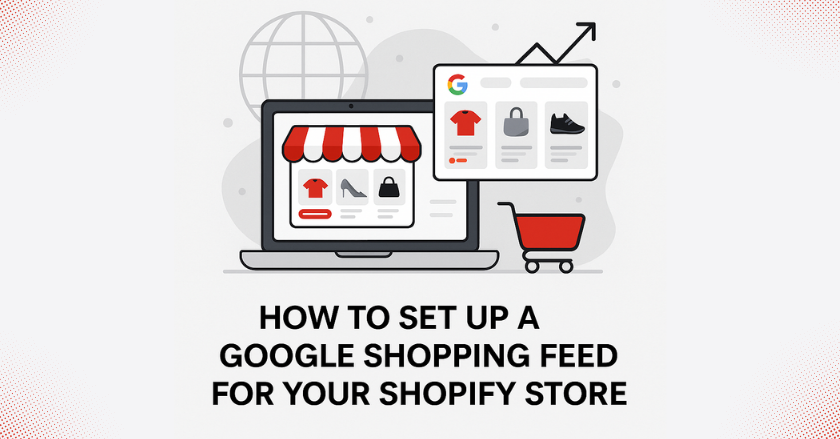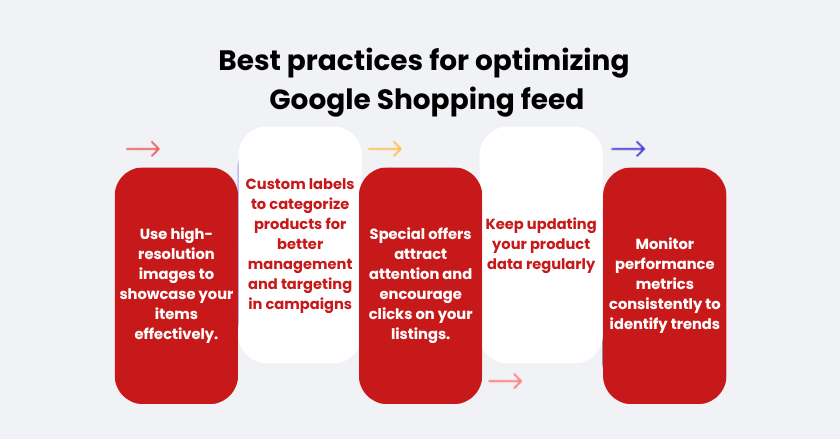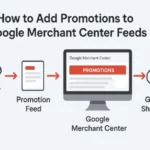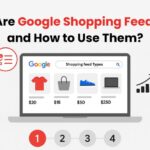
Are you ready to advance your Shopify business? If you’re looking for a powerful way to boost online visibility and drive sales, you’ve come to the right place! In today’s digital marketplace, having a stunning storefront is just the beginning. Enter Google Shopping: a game-changing platform that connects eager shoppers with products they want your products! But how do you get your items noticed among millions of others? The answer lies in setting up an effective Google Shopping feed. In this guide, we’ll walk you through each step of the process, making it easier than ever for your Shopify store to shine brightly on Google’s vast shopping landscape. Get ready to unlock new opportunities and watch as customers flock to your site! Let’s get started and change your e-commerce experience right now!
Introduction to Google Shopping and Shopify
Are you prepared to achieve greater success with your online store? If you’re running a Shopify store, tapping into the power of Google Shopping can unlock incredible growth opportunities. This platform allows businesses like yours to showcase products directly in search results, making it easier for potential customers to find and purchase what they need.
But before you dive headfirst into this ocean of possibilities, there’s one crucial step: setting up your Google Shopping feed. This essential tool ensures that your product listings are accurate and optimized for visibility on Google. Whether you’re just starting or looking to enhance your existing setup, learning how to create an effective e-commerce product feed is key.
The procedures for developing a robust Google Shopping integration for Shopify will be outlined in this blog article. From creating a Merchant Center account to troubleshooting common issues, we’ll cover everything you need for a successful launch. Ready? Let’s get started!
Why is it important to set up a Google Shopping feed?
Setting up a Google Shopping feed is vital for any e-commerce business. This powerful tool allows your products to appear in Google’s shopping results, placing them directly in front of potential customers who are actively searching for items like yours.
By leveraging Google’s extensive reach, you gain access to millions of shoppers worldwide. You may increase visibility and attract targeted customers to your store with a well-organized feed. With more eyes on your products, the probability of conversions increases significantly.
Additionally, using a Google Shopping feed makes product administration easier. It ensures that all information—like pricing and availability—is accurate and up-to-date across platforms. This consistency builds trust with consumers.
In today’s competitive market, an optimized Google Shopping presence can set you apart from rivals. It transforms passive browsing into active buying behavior by showcasing your offerings right where it matters most: at the moment of search intent.
Step-by-step guide on setting up a Google Shopping feed for your Shopify store
To set up a Google Shopping feed for your Shopify store, start by creating a Google Merchant Center account. Product listing management requires this platform.
- Next, connect the Merchant Center to your Shopify store. You can do this easily through apps like “Google Channel,” which simplifies the integration process.
- After linking, focus on setting up your product data and attributes. Ensure that you provide accurate titles, descriptions, prices, and availability for each item in your catalog.
- Once all details are entered correctly, verify and submit your feed. This step ensures that Google receives all necessary information about your products so they can be displayed effectively on shopping searches.
Creating a Google Merchant Center account
Creating a Google Merchant Center account is your first step toward showcasing products on Google Shopping.
- Start by visiting the Merchant Center website.
- After selecting “Sign Up,” enter the necessary details about your company. You will need to enter your store name, country, and time zone. Make sure these details are accurate as they influence how customers see you.
- Google will ask for verification of your business, typically through a website link or HTML file upload. This process ensures that you’re the rightful owner of the online store.
- Once verified, complete any additional required fields in your profile settings. It’s crucial to set up shipping and return policies too; this builds customer trust right from the start.
Be prepared with all necessary documents handy during registration. The more organized you are at this stage, the smoother it will be moving forward in creating an effective Shopify Google Shopping presence.
Linking your Shopify store to the Merchant Center
Linking your Shopify store to the Google Merchant Center is a pivotal step in setting up your Google Shopping feed. It ensures that your product listings are synced and updated, allowing you to reach potential customers effectively.
First, navigate to your Google Merchant Center account. Here, you’ll find an option for linking platforms like Shopify. Click on it and follow the prompts.
You’ll need to input your Shopify store URL and verify ownership. This usually involves adding a meta tag or uploading an HTML file from Merchant Center into your Shopify settings.
Once linked, you can manage all product information directly from Shopify. Changes made in one platform will reflect automatically in the other, saving time and reducing errors. This seamless integration enhances visibility across Google’s shopping ecosystem, making it easier for shoppers to discover what you offer.
Setting up product data and attributes
Setting up product data and attributes is crucial for your Google Shopping feed. Accurate information ensures that potential customers find your products when they search online.
- Arrange the most important information, such as pricing, titles, and descriptions. Make sure each title reflects the actual product. Avoid jargon; consider what a customer would type into a search bar.
- Next, include all relevant attributes such as brand, color, size, and material. These specifics help Google categorize your items effectively.
- Don’t overlook GTINs (Global Trade Item Numbers) if applicable. They increase trustworthiness and visibility in searches.
- Lastly, keep your inventory updated regularly to prevent discrepancies between your Shopify store and Merchant Center listings. This step minimizes errors that can hinder sales opportunities.
Verifying and submitting your feed
Once you’ve set up your product data in Shopify, the next step is verifying and submitting your Google Shopping feed. This process ensures that everything aligns with Google’s requirements.
- Start by navigating to the Google Merchant Center dashboard. You can choose to validate your feed here. It’s essential to check for errors or warnings before submission. Address any issues promptly as they can hinder your products from appearing in search results.
- After verification, it’s time to submit the feed. Click on the “Feeds” section of the Merchant Center and select “Add Feed.” Choose the correct type of feed relevant to your Shopify store.
- Once submitted, monitoring is key. Keep an eye on notifications regarding status updates or suggestions for improvement. This proactive approach helps maintain a competitive edge in online shopping visibility.
Best practices for optimizing your Google Shopping feed
When it comes to optimizing your Google Shopping feed, start with product titles and descriptions. Make use of titles that are descriptive, clear, and contain pertinent keywords. This makes it easier for potential buyers to find your stuff.

- High-quality images are crucial as well. Invest in professional photography or use high-resolution images to showcase your items effectively. Visual appeal can significantly influence purchasing decisions.
- Custom labels allow you to categorize products for better management and targeting in campaigns. Consider tagging seasonal items or best-sellers separately.
- Promotions play an essential role, too. Highlighting discounts or special offers attracts attention and encourages clicks on your listings.
- Keep updating your product data regularly. Accurate information ensures that shoppers see the latest stock levels, prices, and details, which can directly impact conversions.
- Lastly, monitor performance metrics consistently to identify trends and areas for improvement within your feed strategy.
Choosing the right product titles and descriptions
Crafting compelling product titles is essential for your Google Shopping feed. Use clear, descriptive language that highlights key features. To increase search visibility, naturally include appropriate keywords.
- Keep titles concise but informative, ideally under 70 characters. This ensures they’re fully displayed in search results and grab potential customers’ attention quickly.
- When writing descriptions, paint a vivid picture of what the product offers. Focus on benefits over features; let shoppers know how it solves their problems or enhances their lives.
- Incorporate important details, size, color, and material while also conveying your brand’s unique voice. The goal is to create an emotional connection that encourages clicks and conversions.
- Remember to include call-to-action phrases like “Buy Now” or “Shop Today” to guide users toward making a purchase decision. With well-optimized titles and descriptions, you’ll stand out among competitors in the crowded e-commerce landscape.
Using high-quality images and videos
Visuals play a crucial role in e-commerce. Customers are more likely to click on listings that have clear, well-lit photos.
- Consider using multiple angles of your products. This helps shoppers visualize the item better. It’s also an opportunity to showcase important features.
- Videos can elevate your product presentation even further. A short demonstration or unboxing video can engage visitors longer than static images alone.
- Ensure all visuals are optimized for fast loading times, too. Customers may become irate and leave their carts empty as a result of slow-loading websites.
- Lastly, remember to adhere to Google’s image guidelines when uploading photos to your Google Shopping feed. This will enhance visibility and improve performance across platforms like Shopify and Google Shopping.
Utilizing custom labels and promotions
Custom labels are a powerful tool for organizing your Google Shopping feed. They allow you to categorize products based on various attributes, like seasonality or sales.
- Promotions add an engaging element to your listings. Highlighting discounts or special offers can attract clicks and drive conversions. Use eye-catching language that conveys urgency, such as “Limited Time Offer” or “Seasonal Sale.”
- Make sure to align these promotions with the overall marketing strategy of your Shopify store. Consistency builds trust, making customers more likely to convert.
Consider testing different approaches with custom labels and promotions over time. Analyzing performance data from Google Merchant Center will reveal what resonates best with your audience, allowing for continuous improvement in product visibility and engagement rates.
Troubleshooting common issues with setting up a Google Shopping feed
Setting up a Google Shopping feed can sometimes feel daunting. Many store owners encounter issues that can delay their product listings.
- One common problem is data mismatch. Ensure that your product information in Shopify aligns perfectly with what you submit to the Merchant Center. Any discrepancies can lead to disapproval.
- Another frequent hurdle is image quality. Google has specific requirements for images used in ads. If your photos are not high-resolution or don’t meet size specifications, it could result in an incomplete listing.
- You might also face eligibility issues tied to shipping settings or policies. Always double-check these aspects within your Merchant Center account.
Lastly, be aware of policy violations that may arise from restricted products or misleading titles and descriptions. Familiarizing yourself with Google’s advertising policies ahead of time can save you headaches later on.
Integrating with other marketing strategies (e.g., Facebook Ads)
Integrating your Google Shopping feed with other marketing strategies can amplify your online presence. One effective approach is syncing it with Facebook Ads.
- By doing this, you create a cohesive advertising strategy that targets multiple platforms. This dual approach allows you to reach customers where they already spend their time—whether browsing on Google or scrolling through Facebook.
- Utilizing dynamic ads on Facebook can showcase products directly from your Shopify store’s inventory. When users engage with your listings, they’re more likely to convert due to brand familiarity and targeted retargeting efforts.
- Moreover, consider running promotional campaigns across both platforms simultaneously. Offer exclusive deals or limited-time discounts that encourage immediate action from potential buyers.
This synergy not only enhances visibility but also drives traffic back to your online store product listing. By interlinking these channels, you foster a seamless shopping experience for consumers while maximizing sales opportunities.
Tracking and analyzing the performance
Tracking and analyzing the performance of your Google Shopping feed is crucial for optimizing your e-commerce strategy.
- Start by linking your Google Analytics account to monitor how users interact with your product listings. This integration will provide valuable insights into traffic sources, conversion rates, and customer behavior.
- Also, use data from Google Merchant Center. The platform offers reports on impressions, clicks, and sales generated through your listings. Regularly reviewing this information can help you identify which products perform best and which may need adjustments.
- Look for trends in consumer behavior over time. For example, are certain seasons or holidays driving more traffic? Are specific keywords leading to higher conversions? Use this knowledge to refine your product titles, descriptions, and bidding strategies accordingly.
- Consider A/B testing different elements within your shopping feed, too. Experiment with variations of titles or images to see what resonates most with customers. This iterative approach enables continuous improvement based on real-world data.
Investing time in tracking these metrics pays off when it comes to enhancing visibility and increasing sales in a competitive online marketplace. By staying informed about how well each part of your Shopify store performs within Google Shopping, you’ll be better equipped to make strategic decisions that drive growth and success in e-commerce.





